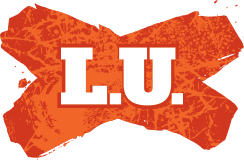While the football club showed an operating profit, Red Football Ltd recorded a loss of £21.4 million, and Red Football Joint Ventures Ltd a loss of £44.8 million, due in large part to interest costs during the year of £68.8 million.
When the Glazers bought the club for £828 million in 2005 they borrowed £556 million to help them do it, securing about 70 per cent of that against the club. As of June last year, according to these accounts, that debt stood at £699 million.
The principle reason for the spiralling level of debt it increased by £33 million compared to 2006-07 is the structure of the loans. The majority of the debt, £518 million, is bank debt secured against the club and their assets, including Old Trafford and the Carrington training ground.
A further £175 million is in "payment in kind" loans, effectively a form of equity, accruing interest at a penal 14.25 per cent annually. That interest is not paid off but rolled over annually, swelling the PIK loans by £23 million in the last year.
Club sources argue that as this debt is effectively secured against the Glazers' assets, rather than the club, there is no need for concern. They also point out that the losses are swollen by the accounting device of writing off "goodwill", effectively the amount by which the Glazers overpaid to buy the club, which amounted to £35 million in the last year.
What will worry supporters and, those in the Government and the Football Association concerned by United's reliance on such a heavily-leverage business model, is that even the bank debt is increasing, by £8 million. Interest is being serviced, but debt is not being reduced.
In theory none of this will matter if United continue to perform on the pitch and commercially, and if the banks retain their appetite for carrying the club's debt as the impact of the credit crunch, which largely post-dates these accounts, plays out.
The questions concerning supporters last night were what happens if the pre-eminence of recent seasons is threatened. Will the recession impact on the club's ability to sell out Old Trafford and more importantly the 10,000 executive seats that contribute close to half the revenue? Will a significant bid for Cristiano Ronaldo prove irresistible?
And will chief executive David Gill, paid £1.7 million last year for guiding the club between the demands of their Scottish manager and American owners, secure a replacement for shirt sponsor AIG willing to match the £19 million the American insurer presently pays?
The answers will become clear in time, but last night fans were left to reflect on confirmation of the Glazers' legacy to United; a burden of debt that leaves even the most commercially astute and successful of clubs running to keep up.

